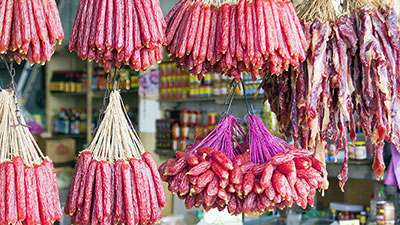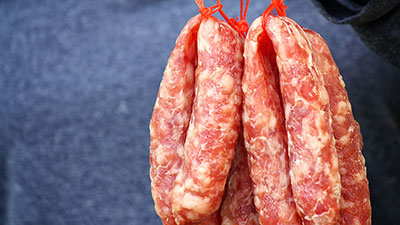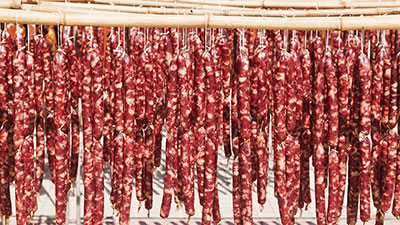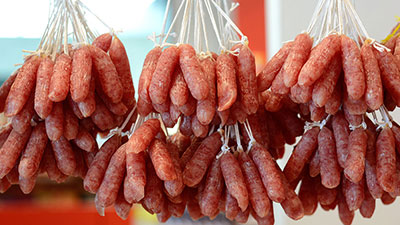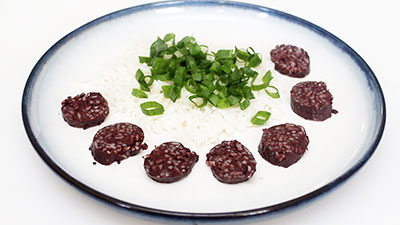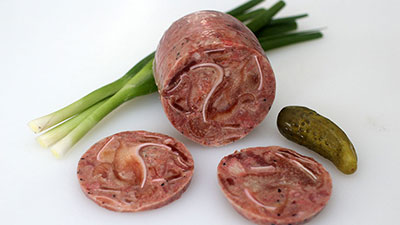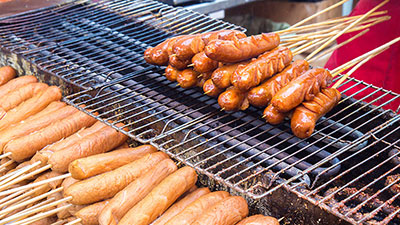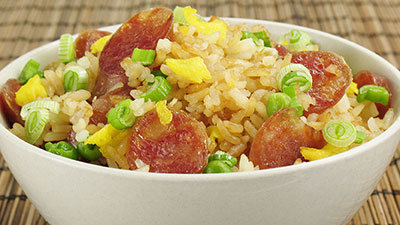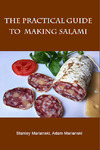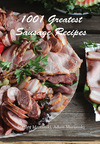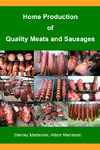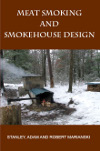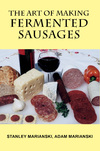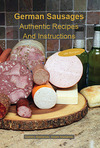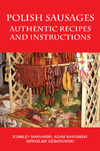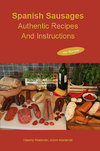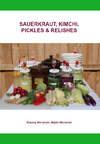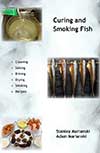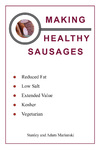Meats and Sausages
Chinese Sausages
Pork meat makes the best sausages and Chinese love pork. There is a saying that their love of pork prevented them from converting to Islam. A pig is one of the 12 animals in the Chinese Zodiac calendar. Although most Chinese sausages are made of pure pork, other meats such as beef, chicken, duck, or mutton are often added. Pig liver or duck liver are usually added to liver sausages. It is generally accepted that the Chinese were making sausages already 2000 years ago. Any reliable information about making sausages in China dates back to the fifth century and some of the techniques are still being used today. Like in other countries, there is not one universally followed sausage recipe, but rather, each region of the country develops its own variation even though the name may remain the same. The Chinese name for sausages is “Lap Cheong” which means the “winter stuffed intestine” or “waxed intestine” because “cheong” not only means “intestine” but also “sausage”. This sausage is normally dried in air or over slow burning fire. The sausage is used as an ingredient in many dishes in some parts of southern China, including Hong Kong and countries in Southeast Asia. It is, for example, used in fried rice, noodles, and other dishes. Chinese sausage formulations are unique and based on a long tradition. Ingredients such as soy sauce and sugar are added to the sausages at very high levels. Chinese rice wines, distilled spirits or even scotch or sherry are commonly added to sausages. Traditional Chinese recipes, similar to Italian salami recipes have been handed down over generations without much understanding of underlying processes. They are a result of error and trial procedures; however, they are modified today to comply with the safety rules of the Chinese Meat Safety Department. Sausages are eaten all year round but consumption is greatest in February during the Chinese New Year.
Chinese Dry Sausages
Although one can encounter in China fresh sausages, blood sausages, liver sausages and head cheeses, nevertheless, when discussing a Chinese sausage, we usually mean a traditional dry sausage known as La Chang or Lap Cheong. The confusion comes from different Chinese dialects; in Cantonese dialect (the south provinces) the sausage is known as Lap Cheong, but in Mandarin dialect (the north provinces) the sausage is known as La Chang.
The word "la" carries two meanings:
a. it denotes the cool period of the year as the sausages in the past were usually made in winter months, not just in China but also in Europe. A pig grows fast and reaches the right size in December. It will be costly and difficult to feed and keep the pig indoors due to winter freezing temperatures so a practical solution is the slaughter of the animal. In Europe, there was a strictly observed long period of fasting that preceded Christmas. At Christmas, the fasting regulations were lifted as that was the time to be merry and happy and a full stomach contributes greatly towards this feeling. Chinese do not obey fasting rules; however, it is much easier to process the meat at low winter temperatures and produce sausages that will last well into the summer. In Europe, there was a saying that sausages should be produced in a month that carries the “R” letter in its name (September, October, November, December, January, February, March, and April).
b. Chinese pronunciation for “wax” is “la.” As traditionally made Chinese dry sausages develop a pleasant shiny appearance it was accepted to call them La Sausages. A fish cured in brine and left to dry for 30 minutes before smoking develops a similar shine known as “pellicle” that becomes permanent even after smoking.
Lap Cheong
The flavor of dry Lap Cheong is different from traditionally made European salami, however, it is unique and pleasant. Traditionally made salami, traditionally made dry sausage, cold smoked sausage, and hot smoked sausage all have a peculiar texture and flavor, and Lap Cheong displays unique characteristics as well. The reason is a large amount of sugar that triggers reactions inside the sausage. In the beginning, during short curing/marinating process, the naturally occurring meat lactic acid bacteria (Lactobacillus) start multiplying, however slowly, due to a low temperature in the cooler. The next step is drying; in the beginning a small amount of fermentation takes place as naturally present in meat bacteria start consuming sugar, which will produce some of the lactic acid and increase meat’s acidity (pH drop). As the moisture evaporates from the sausage, the drying temperature also increases. Once the drying temperature approaches 50° C (122° F), lactic bacteria cannot function due to high temperature and not enough moisture. The fermentation and the production of acidity come to a halt. This short fermentation will produce a negligible amount of acidity, so the sausage will not develop any noticeable sour flavor. Soy sauce and sugar will offset any sourly flavor that could have even developed if the sausage was slowly dried at 38° C (100° F). Relatively high drying temperatures result in a short drying process due to the small diameter of sausages. This does not offer favorable conditions for curing and flavor-producing bacteria like Micrococcus and Staphylococcus to react with meat and develop flavors. Those bacteria play a crucial role in the ripening of traditionally made products in Europe. In simple terms, bacteria do not get enough time to react with meat, besides, high drying temperatures create a rapid loss of moisture which further inhibits bacterial growth.
Thus, the flavor of Lap Cheong sausages is not developed by the action of bacteria. Protein and fat breakdown through enzymatic reactions develops the flavor of Lap Cheong. A wonderful combination of sugar and soy sauce contributes positively to the taste of the sausage. It is also accepted that the Maillard reaction contributes to flavor and aroma development in Chinese sausages. Although Maillard reaction occurs at 150-250° C (302-482° F), nevertheless, it is agreed that in meat with low moisture (due to drying) and the presence of a significant amount of sugar, the reaction occurs as well.
Ingredients
Salt
Lap Cheong is a dry (uncooked) sausage so salt must be added in sufficient quantity to prevent spoilage and dangerous bacteria from growing. Salt can be applied in any amount when making fresh (they will be cooked) or cooked sausages, however when making fermented or dry sausages like Lap Cheong, the amount of salt is not negotiable – it must be applied at 2.8 – 3% (28-30 g salt/1 kg of meat). You could probably get away with less salt (2.5%) if the sausage is stuffed into a small diameter casing (22-25 mm), however, it is not recommended. The secondary benefit of salt is that it improves the flavor of meat. The salt content also changes to suit the local preferences and changes from region to region.
Cures
sodium nitrite and sodium nitrate are added to develop red color and to prevent pathogenic (dangerous) bacteria from growing. Cure 1 (sodium nitrite) and cure 2 (contains sodium nitrite and sodium nitrate). Both cures can be applied, although cure 2 is usually chosen for making dry sausages as it supplies sodium nitrite longer. Cures are applied at 2.5-3 g (1/2 tsp) per 1 kg of meat, which introduces 150-200 parts per million of sodium nitrite. For making regular cooked/smoked sausages cure #1 is added at 2.5 g (1/2 tsp) per 1 kg of meat, which introduces 150 parts per million of sodium nitrite. A slightly higher amount may be introduced to sausages that are dried as their manufacturing process is longer and nitrite dissipates rapidly in time.
Note: in all developed countries, sodium nitrite and sodium nitrate are available premixed with salt. In the USA, they are called cures (Cure 1 and Cure 2); in Poland Peklosol, in Germany Pokelsalz etc. They are mixed in different sodium nitrite to salt proportions. It is unlikely that a customer can obtain pure white crystals of sodium nitrite as 1 g of the substance is considered a lethal dose. More on nitrates.
Sugar
In the past, sugar was often mentioned in sausage recipes that used sodium nitrate (cure 1 and cure 2 were not available yet). In the past, sodium nitrate was commonly used, but it needed curing bacteria (present in meat) to start a reaction with nitrate. As a result of the reaction, nitrate produced sodium nitrite which started reacting with meat. However, curing bacteria needed nutrients to grow and to start a reaction with nitrate. This food was a small amount of sugar added to the meat. Today, the practice of adding sugar is of lesser importance because sodium nitrite does not require curing bacteria at all. In a small way, the addition of sugar offsets the harshness of salt and somewhat contributes to the preservation of red color in the sausages. Sugar is added as food for lactic acid bacteria in fast-fermented sausages to increase acidity (pH drop). In Chinese sausages, relatively large amounts of sugar (sometimes up to 20%) are added as flavoring. Generally, it is added at 6-7% (60-70 g/1 kg of meat, which corresponds to 4-5 tablespoons, although less sugar can be added. However, if less than 2% sugar is added, the sausage will lose its unique flavor and character. As it is combined with salt, soy sauce, white wine or grain alcohol, and spices, it imparts a very pleasant flavor to dry sausages. White sugar is used for making Chinese sausages.
Soy Sauce
Soy sauce, a brown or black salty liquid, is made by fermenting soya beans and wheat. It is an essential ingredient used in making Chinese sausages. There are dozens of different soy sauces in oriental supermarkets and they are all suitable. A solid soy paste is also available. If you are unsure as to what soy sauce to use start with light soy sauce. Soy sauce is usually added at 3-4%. Keep in mind that some salt is introduced with soy sauce. Adding 1.5% soy sauce, corresponds to 1 Tablespoon (15 ml) and introduces about 1 g of salt. If you are a perfectionist, you may subtract this amount from the total amount of salt in the recipe.
Alcohol
Alcohols are often used to enrich the aroma of processed meats and sausages. Germans add infused with herbs and spices alcohol to many sausages, Italians add red wine to salami, and Russians often add brandy or cognac to their sausages. Portuguese cure/marinate meat overnight for many sausages. Chinese add rice or rose wine (1.5-3.5%) and white distilled spirits to their sausages. Distilled spirits are usually made from sorghum, rice, or other grains. They are much stronger than wine, usually about 40 – 60% (80-120 proof). Chinese Mirin sweet cooking rice wine is available in American supermarkets.
Monosodium glutamate (MSG) – Chinese are very fond of adding MSG (flavor enhancer) to meat and sausages. MSG is used in the food industry as a flavor enhancer that intensifies the meaty, savory flavor of food. It is usually added at 0.2-1.0%.
Spices
Aromatic spices are very popular: cinnamon, fennel, Sichuan pepper, nutmeg, ginger, galangal, Mandarin orange peel, cardamom, anise seed, and turmeric. There are premixed combinations available in stores, one of the most popular ones is the Five-Spice Powder; a common combination is star anise, fennel seeds, cloves, Chinese cinnamon, and Sichuan pepper. Sichuan pepper is not as hot and pungent like black or white pepper, it has some lemony flavor to it.
Ingredients such as starch, coloring, or soy protein concentrate are usually not added to high-grade sausages. Food colorings are added to meat products such as ribs or duck, however, their use in sausages is not widespread.
Manufacturing Process
The manufacturing process follows the same basic sausage-making procedure:
Meat selection – high quality pork and fat. It has been well established that the leaner the meat, the better the quality of the sausage, and La Cheong is no exception. However, without pork fat, which carries the flavor, the sensory attributes, especially the flavor of the sausage will suffer. For Lap Cheong sausage processing, the best sources of lean meat are the back legs (ham) followed by the fore legs of pigs (lean cuts from butt and picnic). It should be noted that the legs of the pig, the lower part of the shoulder (picnic), or its upper part, known as the butt, contain all grades of meat, but only lean cuts should be selected. Avoid tendons, sinews, and connective tissue as these will be hard to chew in a finished sausage. On the other hand, pork fat should ideally be collected from the back of pigs; good-quality pork fat should be hard in texture and white in color. For better fat definition, scald diced fat cubes briefly with hot water. Lap Cheong is made of pork, it is possible to find sausages made from pork and chicken or even other meats, however, this is done not to improve the taste and flavor of the sausage, but to lower the costs of the production.
You can produce grade 1 quality sausage by using 75% lean meat to 25% fat. Selecting an average pork butt (shoulder) will meet this requirement, OR you can mix pork and fat trimmings in similar or different proportions. However, it is not recommended to use less than 25% fat. You could increase the amount of fat up to 50% so that the sausage will be 50% lean: 50% fat; however, remember that after 3 months, fat develops rancidity, so the flavor of the sausage will deteriorate. Keeping sausages refrigerated or frozen will not prevent rancidity.
Grinding/cutting – meat is cut by hand or ground through ¼” (6 mm) plate.
Mixing – ground meat is mixed with salt, cure, other ingredients, and diced/ground fat. The mixture is kept overnight in a cooler at 4° C (40° F) to allow for some curing to take place.
Drying – the sausages are rinsed and hung to dry. Like other traditionally made dry sausages, for example Spanish chorizo or Italian salami, Chinese dry sausages must be dried until they lose about 35% moisture. This, of course, is dependent on the diameter of a sausage, temperature, humidity, and airflow. Since Chinese sausages are usually stuffed into small diameter casings (~ 25 mm), the drying process is relatively short, so drying temperature can fluctuate within a wide range, but should stay below 50° C (122° F). Of course, it is taken for granted that the proper amount of salt (~ 3.0%) and maximum allowed by law percentage of sodium nitrite/sodium nitrate (cure 2 or cure 1) is introduced. The advantage of drying small-diameter sausages at such a high temperature is that after drying for 1-2 days, most of the bacteria is dead and the finished sausage is microbiologically stable and safe for consumption. However, such a high temperature cannot be applied to sausages stuffed into larger casings, for example, 40-60 mm, as the heat will create a hard surface area and the moisture will not be able to evaporate. It should be remembered that the sausages dry from inside out. Depending on the type of la sausages, they are commonly dried by air or mild roasting at temperatures close to but below 50° C (122° F) for about 3-4 days. This range of temperatures lies inside the danger zone and is well-suited for bacteria growth. This is why a sodium nitrite (Cure 1) and a larger percentage of salt (2.5-3.0%) are added. A finished dry sausage loses about 40% of its original weight (water) whi
h makes it microbiologically stable, given that bacteria need water for survival. Dry sausage can be stored at room temperature.
At home conditions, drying is performed with a natural airflow, so the temperature is greatly affected by the seasonal weather. The sausages can be hung outside or placed in an enclosed area, like a smokehouse. Using a smokehouse allows to increase the temperature in cold months by slowly burning wood, however, the sausage will acquire a smoky flavor. To prevent this, the wood should be pre-burned in a separate area, and only hot embers should be introduced into the smokehouse. The reason is that most of the smoke is produced in the first stages of burning wood. A large pre-burned log of wood will provide heat for many hours without producing smoke. As sausages are dried at relatively high temperatures there is no need for strong ventilation or a draft in a smokehouse. Strong airflow can inhibit drying by creating a harder surface (crust) which will impede the further removal of the moisture.
Chinese dry sausages are not smoked, just dried.
Stuffing – sausage meat paste is stuffed into animal casings, stomachs, and bladders, at least in home production. It can be stuffed with fingers through a suitable funnel, a grinder with a stuffing tube, or a dedicated piston stuffer. In home production, a variety of natural casings is used; hog, horse, sheep, rabbit, the small diameter casings are preferred as they simplify drying process. Commercial producers use small diameter 22-25 mm natural casings or small diameter collagen or synthetic casings. Casings should be stuffed firmly and any visible air pockets should be pricked with a needle to remove air. Leftover air pockets will result in tiny holes and can form local discolorations. It should be noted that casings must be permeable, they must allow the moisture to evaporate away.
Storing - the dry sausages can be kept for several months at room temperature. Chinese employ an ingenious way of marking grades and quality of their sausages by using a differently colored hanging strings. Lap Cheong sausage, which is only partially dried is not safe to consume and must be cooked to at least 59° C (137° F) before serving. The problem is the possibility of contracting a trichinella spiralis round worm that is known to be present in free-ranging pigs and wild game. In Europe, each slaughtered pig is inspected for “trichinae” before it enters distribution channels, in the USA it is assumed that commercially raised pigs are free of the worm due to their carefully prepared commercial diet. However, a pig raised on a farm eats anything it can find and may be infected with a worm. Trichinella spiralis worm is easily destroyed by heating pork meat to 59° C (137° F) or by freezing it for a prescribed amount of time before processing.
A typical composition of a standard Lap Cheong sausage recipe:
| Meats | Metric | U.S. |
|---|---|---|
| Pork meat, lean | 700 g | 1.54 lb |
| Pork back fat | 300 g | 0.66 lb |
| Ingredients per 1000 g (2.2 lbs) of meat | ||
| Salt | 25 g | 4 tsp |
| Cure #1 | 4.0 g | 3/4 tsp |
| Sugar | 60 g | 2.1 oz |
| Soy sauce | 30 ml | 1 oz fl |
| Rice wine or distilled alcohol (50-60%) | 30 ml | 1 oz fl |
| Cinnamon | 1.0 g | 1/2 tsp |
Other Chinese Sausages
Every country makes all types of sausages and China is no exception. Blood sausage made in Poland differs from a blood sausage made in England, France or Spain because it includes a different combination of ingredients, however, it contains blood and it is still a blood sausage. Sausages made in the Sichuan province of China are hotter than similar sausages made in different regions. A fresh Mexican chorizo will be much hotter than Spanish chorizo. Poland, Germany, and Russia have been making sausages for centuries yet they still stay away from hot sausages made with chili peppers, something that is common and perfectly acceptable in Asian countries or even in southern parts of the United States.
The manufacturing process for making a particular sausage does not change much no matter in which country the sausage was produced. What changes is a preconceived regional expectation of how the sausage should taste or look. Chinese add sugar, soy, cinnamon and alcohol to their sausages and they may smoke them or not, Poles like marjoram, mustard seed, coriander, allspice and they almost always smoke sausages. Northern Europeans are not particularly crazy about southern European dry sausages, and of course, Italians or Spaniards don’t care much about smoked products. To make it short, Chinese sausages carry a different flavor to satisfy the demands of a local Chinese customer and their unique taste may feel unusual to customers who have never tried them before.
Liver Sausages
Chinese liver sausage Goin Chong is made with pork or duck livers; however, it is a dry sausage that is different to spreadable liverwurst style sausages so common in Europe. European sausages are made with liver, soft fat and pork where all ingredients are emulsified to a consistency of a fine paste. The sausage is then cooked in water and spread on bread. It is rarely smoked and usually made without sodium nitrite (cure 1) so its color is creamy. In Chinese Goin Chong pork meat, hard fat and liver are diced or ground through 6-8 mm (1/4”) plate, sodium nitrite is added and the sausage is air dried. The sausage appearance is dark.
Blood Sausages
Blood sausages are made from pork blood and rice. Chicken blood is commonly available in local markets. Blood is very perishable, so a stuffed sausage is cooked in water without delay and then can be kept for a few days in the refrigerator. A stuffed sausage can, of course, be baked or fried, and served with rice as long as it is fully cooked. Aromatic spices like cinnamon or Chinese 5 Spice Mix go well with blood sausages.
Many Chinese would say that the Chinese Blood Sausage should be made from blood and nothing else. This is not unusual as there are Spanish blood sausages that are made from blood only (Morcilla Lustre, Morcilla Lustre Malagueña). There is a story saying that the blood sausage was made by the Manchurian who believed in Shamanism. They used to butcher animals for worshipping, which contains a step that uses animal blood to make the sausage. In Northern China people like to eat a pork sausage with pork and pickled Chinese cabbage – which is quite similar to Germany Sauerkraut but made with Chinese cabbage. People in Mongolia and Tibet will use sheep blood and mutton to make blood sausages, but that’s not very popular in China. Most of the Chinese blood sausages are made with pig blood.
Head Cheeses
Harbin Sausages
Eastern European style sausages were manufactured in Harbin, the largest city in Heilongjiang province in the northeastern region of China. At the beginning of 1900s, many settlers from Russia, Lithuania, and Poland arrived in Harbin. They brought with them new cuisine. Sourdough bread, Russian Kvass beverage, and cured and smoked sausages appeared in Harbin. A new sausage called Harbin Red, Kazakh Red ,or LI Dao Si has become immensely popular first in Harbin, then in other parts of China as well as in neighboring countries.
Serving Chinese Sausages
Chinese sausages
The following Chinese Sausages are listed in our Sausage Recipes Index:
- Chinese Blood Sausage with Rice
- Chinese Sausage - Smoked
- Dongguan
- Fen Chang
- Goin Chong - Cooked
- Goin Chong - Dry
- Guan Chang
- Guan Chang - Vegetarian
- Harbin Red Sausage
- Lap Cheong
- Lap Cheong - Fermented

